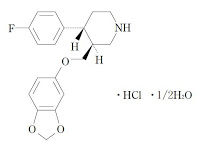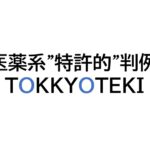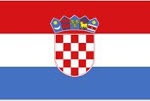プロダクト・バイ・プロセス・クレームは公知プロダクトにより新規性を失うか?: CAFC Docket No.04-1522
パロキセチン塩酸塩(paroxetine hydrochloride)を抗うつ剤として販売(販売名: パキシル(Paxil)、選択的セロトニン再取り込み阻害剤(selective serotonin reuptake inhibitor: SSRI))しているSmithKlineは、ANDA申請したApotexに対して、新規な方法により製造されるパロキセチンをプロダクトバイプロセスによりクレームした米国特許(6,113,944)を侵害しているとして訴訟を提起した。
Claim 1.
A pharmaceutical composition in tablet form containing paroxetine, produced on a commercial scale by a process which comprises the steps of:
a) dry admixing paroxetine and excipients in a mixer to form a mixture; or
b) dry admixing paroxetine and excipients, compressing the resulting combination into a slug material or roller compacting the resulting combination into a strand material, and milling the prepared material into a free flowing mixture; and
c) compressing the mixture into tablets.
該特許が、パロキセチンに関する先願米国特許(4,721,723)により新規性を失っているか否かが争われた。
【要旨】
たとえ、プロダクトクレームが製法限定されていたとしても、特許性はプロダクト自身で判断される。従って、プロダクト・バイ・プロセス・クレームは公知技術からプロダクトを取り戻すことはできない。
プロダクト・バイ・プロセス・クレームは公知プロダクトにより新規性を失うと判断された。
【コメント】
プロダクト・バイ・プロセス・クレームは、いくらプロセスを限定しても、プロダクトそのものとして特許性の判断がなされる。
参考:
- GlaxoSmithKline website: パキシル
- 2006.06.26 「三共 v. テバ」 知財高裁平成17年(行ケ)10781




コメント
先行文献は製剤に関する一般記載だったと思います。本特許は乾式造粒で製した製剤ですし、本特許の製剤は湿式造粒の製剤とも作用効果が異なるんですから、本特許の製剤の新規性を認めてもいいような気がします。どう思われます?
ぎっちょんさん、コメントありがとうございます。
CAFCは判決文の後半で下記のように言及しています。
“If those product-by-process claims produced a different product than that disclosed by the ‘723 patent, there would be an argument that the ‘723 patent disclosure did not anticipate.”
従って、もし、SmithKlineが、両製剤が実際には相違するものであるという主張(第二の争点)を放棄していなかったならば、ご指摘のとおりの結論に至った可能性があるかもしれません。